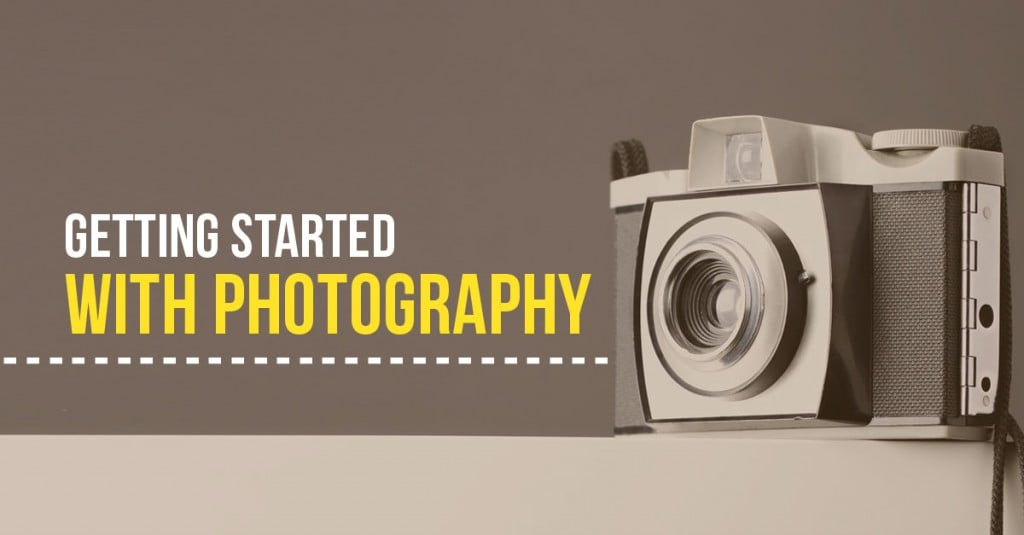How to Get Started in Photography

Photography is more than just snapping pictures. It’s a creative journey that helps you see the world in new ways, capture meaningful moments, and express yourself visually. Whether you’re interested in landscapes, portraits, travel, or simply taking better everyday photos, learning photography can be one of the most rewarding skills to develop.
If you’re wondering where to begin, don’t worry. You don’t need an expensive camera or years of training to get started. With a few key steps, the right mindset, and some practice, you can quickly start building your skills and confidence behind the lens.
Here’s how to get started in photography, broken down into simple, actionable steps.
1. Start with the Camera You Have
You don’t need to buy a professional DSLR or mirrorless camera on day one. If you own a smartphone, you already have a powerful camera in your pocket. Most smartphones today have impressive image quality and offer plenty of features to begin exploring photography.
When you're ready to upgrade, look into beginner-friendly digital cameras that give you manual control over settings like aperture, shutter speed, and ISO. Popular entry-level options include the Canon EOS Rebel series, Nikon D3500, and Sony Alpha a6000.
Focus on learning the fundamentals first. Mastering composition, lighting, and storytelling matters more than the gear you use.
2. Learn the Basics of Exposure
Photography is all about light. To take full control of your images, you need to understand exposure, which is how light reaches your camera sensor. Exposure is controlled by three main settings:
- Aperture (f-stop): Controls how much light enters through the lens. It also affects depth of field, or how much of your image is in focus.
- Shutter Speed: Controls how long the camera’s sensor is exposed to light. Faster shutter speeds freeze motion, while slower speeds create blur.
- ISO: Controls the camera’s sensitivity to light. Higher ISO helps in low-light settings but can introduce grain or noise.
These three settings make up what’s known as the exposure triangle. Understanding how they work together is key to capturing well-exposed, creative images.
3. Study Composition Techniques
Great photography isn’t just about technical skill…it’s also about how you frame and structure your shot. Good composition draws the viewer’s eye and creates visual interest.
Some simple composition tips to get you started:
- Rule of Thirds: Divide your frame into thirds both horizontally and vertically. Placing your subject along these lines creates a balanced image.
- Leading Lines: Use roads, fences, or shadows to guide the viewer’s eye toward your subject.
- Framing: Look for ways to frame your subject within the scene, such as using windows, arches, or foliage.
- Negative Space: Leave space around your subject to create minimal, focused images.
Experiment with different techniques and learn to see scenes through a creative lens.
4. Practice as Much as Possible
Like any skill, photography improves with consistent practice. Try to shoot regularly, even if it’s just for a few minutes a day. You can photograph your morning coffee, your neighborhood, or light streaming through a window.
Don’t wait for the perfect subject or travel opportunity: find beauty in the everyday. The more you practice, the more you’ll refine your style, understand your camera, and develop your creative instincts.
You can also give yourself challenges to grow faster. Try taking a photo a day for a month, focusing on one theme like reflections, shadows, or color.
5. Learn to Edit Your Photos
Post-processing is a big part of digital photography. Editing your images can enhance color, fix exposure, and bring out the details you envisioned when you took the shot.
Beginner-friendly editing apps like Snapseed or Lightroom Mobile are great for smartphones. If you're using a DSLR or mirrorless camera, consider using Adobe Lightroom or Photoshop on your computer.
Start with simple edits:adjust brightness, contrast, crop for better composition, and fine-tune colors. As you become more comfortable, you can explore more advanced editing techniques.
Editing is not about fixing mistakes. It's about bringing your creative vision to life.
6. Study Other Photographers
One of the best ways to grow as a photographer is by studying the work of others. Follow photographers you admire on social media, read photography books, and visit galleries or exhibitions when you can.
Ask yourself what draws you to a particular photo. Is it the lighting? The subject? The mood? The composition? Analyzing other people’s work helps you discover your own preferences and style.
You can also join photography communities online or in person. Sharing your work, asking for feedback, and learning from others can be incredibly motivating and educational.
7. Be Patient and Stay Curious
Photography is a journey. You won’t master it overnight, and that’s part of the beauty. Some days you’ll take great shots. Other days, things won’t go as planned. That’s all part of the learning process.
Stay curious. Try new subjects, lighting conditions, and perspectives. Experiment with techniques you’ve never used before. Most importantly, enjoy the process of seeing the world differently through your lens.
Final Thoughts
Getting started in photography doesn’t require fancy gear or formal training. It starts with curiosity, observation, and the desire to create.
As you begin your photography journey, remember to take it step by step. Learn the basics, practice often, study others, and keep shooting. With time and experience, you’ll develop both the technical skills and creative vision to tell stories through your images, and that’s what photography is all about.
So grab your camera, start exploring, and let your creativity guide you.
Written by Mark Rogers
 Mark Rogers is the President and Co-Founder of Frame Destination. With over 20 years of experience in the field, Mark has become a leading authority on framing techniques and best practices, and has earned a reputation for his innovative approaches to custom framing and frame services for photographers and artists.
Mark Rogers is the President and Co-Founder of Frame Destination. With over 20 years of experience in the field, Mark has become a leading authority on framing techniques and best practices, and has earned a reputation for his innovative approaches to custom framing and frame services for photographers and artists.